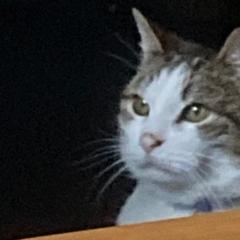M0.5-M0.6 thread taps and drills?
-
Recently Browsing
- No registered users viewing this page.
-
Topics
-
Posts
-
Welcome to the forum. Seals don't last for ever and need replacing.
-
By TimepieceTinkerer · Posted
Initially, when I fitted the train bridge, I noticed that if I tightened the screws all the way down, the wheels wouldn’t function. But if I left the screws slightly loose, everything worked fine. That made me suspect something was misaligned. After checking further, I found the cannon pinion was loose and causing the fourth wheel not to sit properly. Because of that, the train wasn't fully free under normal assembly, and once the balance was in place, the pallet fork and escape wheel couldn’t interact properly — they were effectively blocked. I’m not sure why the cannon pinion was loose, but I used my staking tools and applied a bit of pressure to tighten it. I'm an amateur, and this is my very first ETA movement. If anyone has any idea why the cannon pinion might have been loose in the first place, or if it’s likely to come loose again, please advise — I’d really appreciate the insight. -
Hi everyone I finally had time to try to solve the problem...and I did. 😃 A bit of apprehension about removing the dial and it took a while to put the date and day wheel back in place. The prediction was correct, the screw was completely loosened (5145/1 - Pillar screw (short)) which caused the Date Lever to move out of its place and not activate the date wheel. Thanks for all the help.
-
By JapaneseBob · Posted
Since I got my Amphibia I wore it everywhere - including the gym, and afterwards in the sauna and jacuzzi, and this never troubled it. I realise now this was foolish, and you are free to admonish me for it. Took it on holiday to Portugal, swam in the ocean every day - no problem. Then went skiing in Austria, up the mountain all day, then down again and went for a sauna - and afterwards noticed moisture inside the watch. I have taken the back off, removed the crown and made sure it is dry - then I put the crown back and the case back on, but, based on a post I read in this forum, I placed a piece of coloured paper inside the case and then put it in a glass of water. On opening the watch again it seems the water is coming in all around the crystal. I was able to push the crystal off using my hands, and popped it back into place without the use of a tool. Could I have damaged the crystal or it’s seal with the case? Any advice most welcome. -
By nickelsilver · Posted
The tiniest screws are usually ones used to hold down cap jewels or Geneva stud holders in small high end calibers. 0.30mm threads are sometimes seen here. Smaller than that I've only seen on really small balance screws. I've made 0.25mm thread balance screws; that required making an adjustable die with a 0.30 tap. I asked my tap supplier if they had a 0.25 tap as they didn't list one, and they said yes, then called back to say they do but they are reserved for one specific customer. I think that customer must be Nivarox. Luckily 0.30 and 0.25 have the same thread pitch. Waltham made some amazing automatic cam operated lathes already back in the late 1800s, really the first of their type and the origin of the term "screw machine" which became what all cam operated lathes were called- up until the Swiss innovated with lathes where the workpiece itself moved, sliding in the headstock collet. These are called a- wait for it- Swiss Lathe. Die is 8mm diameter like the old standard dies (which are no longer made, at least good ones).
-





Recommended Posts
Join the conversation
You can post now and register later. If you have an account, sign in now to post with your account.
Note: Your post will require moderator approval before it will be visible.